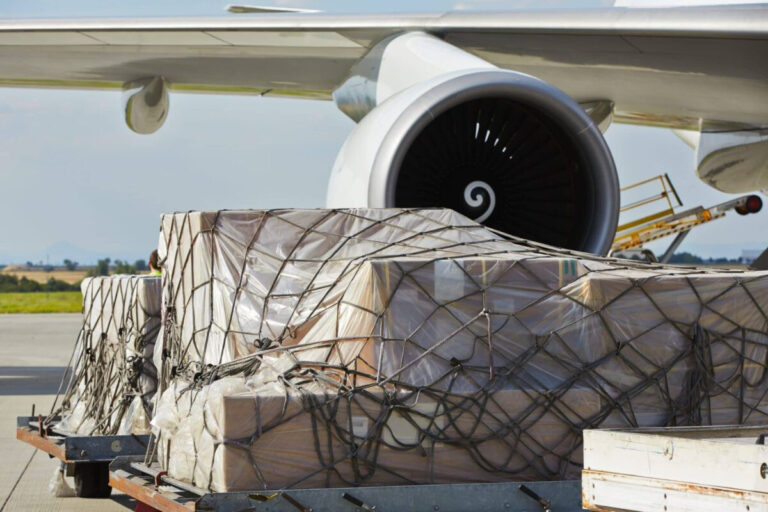
The International Air Transport Association (IATA) Annual General Meeting and World Air Transport Summit examined the significant changes and challenges experienced by the air cargo sector and ongoing efforts to address the challenges through a C-Suite panel comprising female air cargo executives from Finnair, LATAM and Polar. The three eminent figures addressed the shift in focus from passenger business to cargo business in the wake of Covid and how it has shaped the air cargo space, giving it a place at center stage.
The pandemic has brought unprecedented challenges to the global air cargo sector, disrupting supply chains, halting passenger flights, and turning traditional logistics operations upside down. Despite these obstacles, the industry has shown remarkable resilience and adaptability, and has played a crucial role in maintaining the flow of commodities around the world. However, the journey was fraught with great challenges and obstacles.
One of the most immediate and serious impacts of the pandemic has been the disruption of global supply chains. Factory closures, lockdowns and movement restrictions have led to a significant decline in manufacturing production. This has created bottlenecks and delays in the supply of vital goods, including medical supplies, personal protective equipment and medicines.
“Air cargo operators faced the daunting task of managing these disruptions while ensuring the timely delivery of essential items,” said Gabriela Heitola, Senior Vice President of Finnair Cargo. “The reduction in available cargo capacity due to the grounding of passenger flights has exacerbated the situation, with passenger aircraft carrying Usually a large amount of cargo in its holds.
Break down barriers
The air cargo sector witnessed a paradigm shift as the world began to emerge from the COVID-19 crisis in late 2022, driven primarily by the explosive growth of e-commerce. As online shopping becomes more widespread, the logistics and transportation industries have had to adapt to new requirements for speed, efficiency and flexibility. One important innovation in this area is one-way routing, a strategy that has the potential to revolutionize the air cargo sector.
One-way routing is a logistics strategy that focuses on optimizing the path that goods take from the point of origin to the destination without necessarily planning the return trip. Traditionally, logistics companies aim to balance their routes to ensure that transportation vehicles, including aircraft, are filled in both directions to maximize efficiency and reduce costs. However, with the rise of e-commerce, the need for faster delivery times often outweighs the benefits of traditional round-trip logistics.
In the context of air freight, one-way routing allows airlines to prioritize expressways and direct routes, ensuring packages reach their destinations as quickly as possible. “This approach can be particularly useful for meeting the high volume of orders generated by e-commerce platforms, where speed of delivery is a crucial competitive factor,” said Cristina Onante López de Letona.
Technology plays a crucial role in enabling one-way routing and meeting the demands of the e-commerce sector. Advanced data analytics, real-time tracking, and artificial intelligence (AI) are useful in optimizing routes, forecasting demand, and managing resources efficiently. Additionally, innovations such as drone delivery and autonomous vehicles could further enhance one-way routing capabilities in the near future.
Agility
The International Air Transport Association (IATA) reported that cargo capacity fell by more than 25% at the height of the pandemic. This lack of capacity has led to high air freight rates and intense competition for available space.
Kirsty Cribb said: “Air cargo carriers have had to adapt quickly by increasing the use of freighter aircraft and converting passenger aircraft into temporary cargo carriers, a practice known as ‘preighters’. Despite these efforts, meeting the growing demand for cargo space has remained a challenge.” “Big.” , senior vice president and chief management officer at Polar.
Technological progress
The air freight sector, one of the cornerstones of the global supply chain, is undergoing a profound transformation driven by digitization and automation. These technological advances are revolutionizing the industry, enhancing efficiency, reducing costs, and improving overall quality of service. As the world increasingly relies on fast and reliable transportation of goods, adopting digital solutions and automated processes has become indispensable for the air freight sector.
“Despite the obvious benefits, the adoption of digitalization and automation in the air cargo sector is not without challenges. High initial investment costs, the need for skilled personnel to manage and maintain advanced systems, and concerns about cybersecurity are some of the obstacles that It must be addressed.
Kirsty Cribb concluded: “Agility is the new stability. To overcome these challenges, industry stakeholders must work collaboratively to develop standardized solutions and share best practice. Continued investment in training and development will also be crucial to equipping the workforce with the skills needed to operate and maintain Digital and automated systems.
Operational challenges
The pandemic also imposed many operational challenges on the air cargo sector. Health and safety protocols had to be implemented quickly to protect the workforce, including cargo workers, pilots and ground staff. This included measures such as regular testing, social distancing and use of personal protective equipment.
“In addition, various international regulations and restrictions have created a complex operating environment,” emphasized Cristina Onante Lopez de Letona, Vice President of Marketing and Product Development at LATAM Cargo. “Air cargo operators have had to navigate a mixture of border closures, quarantine requirements, and changing regulatory guidelines, often resulting in delays and increased operating costs.
Perishable goods in this sector
With Finnair flying Norwegian salmon and live lobster worldwide, LATAM is making the movement of salmon and asparagus from Chile and Peru respectively towards the US and Europe time sensitive. On the other hand, Polar is involved in a new movement from the United States to Asia carrying flowers and cherries. The panel addressed the most time-sensitive sector of air freight, “perishable cargo.”
In the complex network of global trade and logistics, the air freight sector plays a vital role in ensuring the rapid and safe transportation of a wide range of goods. Among these goods, perishable goods are of particular importance due to their time-sensitive nature and the critical need to maintain their quality during transportation. From fresh produce and medicines to flowers and seafood, perishable goods are indispensable to the air cargo industry and, by extension, to the global economy and public health.
Moving perishable goods involves sophisticated logistics and advanced technology to ensure these items remain fresh and safe throughout their journey. Innovations such as temperature-controlled containers, real-time tracking systems, and advanced monitoring technologies have revolutionized the way perishable goods are handled.
In the face of the challenges faced in the movement of perishable materials, “transporting these goods via air freight presents many challenges.” Gabriela Heitola added, “Ensuring constant temperature control, managing the risk of delays, and adhering to stringent regulatory requirements are some of the main obstacles.” “must be evaluated,” which poses immediate challenges of flight delays and disruptions, causing the shipment to be rejected as unfit for consumption.
To mitigate these challenges, the industry has adopted several best practices and collaborative strategies. “Enhanced coordination between airlines, ground handlers and logistics providers is essential to maintain the cold chain from origin to destination. In addition, investment in infrastructure, such as cold storage facilities at airports and advanced handling equipment, plays a crucial role in maintaining cargo safety.” perishable.


